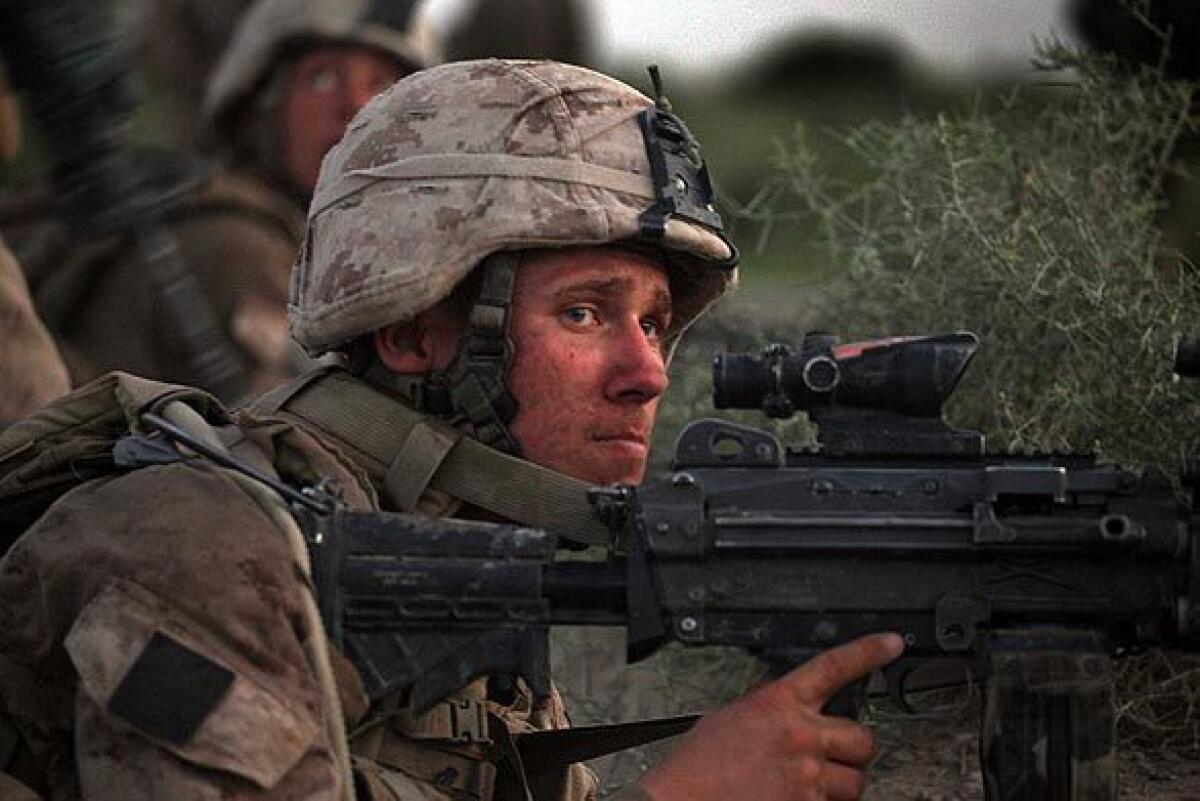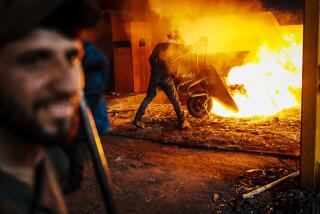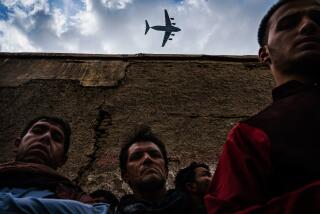A primer on Afghanistan’s political situation, and the U.S. role

- Share via
President Obama is weighing the next step to take in Afghanistan, a policy problem made more daunting by charges of fraud in the recent presidential election. Here is primer to understanding the confusing political situation in Afghanistan and the U.S. role.
Why is the United States fighting in Afghanistan?
Afghanistan is a landlocked country between Iran and Pakistan with a history of violence, particularly to invaders such as the British and the Russians. After the 2001 terrorist attacks on the World Trade Center and the Pentagon, the United States and its allies attacked Al Qaeda bases in the country, then controlled by the Taliban, an Islamic fundamentalist group. The West, operating with United Nations authority, overthrew the Taliban. Al Qaeda, with its top officials including Osama bin Laden, fled to the wilds of Pakistan from where they continue to operate.
What is the current situation in Afghanistan?
The country is nominally led by President Hamid Karzai, but the resurgent Taliban controls important areas. Karzai, who was seeking his second presidential term, was opposed in the recent election by Abdullah Abdullah, a former foreign minister. The key issues included what will be the country’s relationship to the United States and NATO, which have more than 100,000 troops in the country working with local forces to fight the growing violence. Complicating the situation is the high level of corruption fueled by cash from the illicit opium trade.
Why does it matter to the U.S. who wins Afghanistan’s presidential election?
For the United States, Afghanistan has always been the key to the war on terrorism. For the Bush administration, Afghanistan was the protector of Al Qaeda and had to toppled, eventually to be replaced by Karzai, who was friendly to U.S. interests. Now Afghanistan is seen as a listening post into the Al Qaeda areas of Pakistan and a country that must be protected from the return of the Taliban.
What is the Obama administration position?
There is support for helping Afghanistan, but there are differences over whether to send more troops into an increasingly unpopular war. The Obama administration has increased the troop authorization to 68,000, but there are fears that it will not be enough. There has been no formal request for more troops, but U.S. Gen. Stanley McChrystal has prepared a report on Afghanistan options which is being weighed by Obama.
Politically, the Obama administration is at a crossroads as well. Obama and many Democrats opposed the Bush administration war in Iraq, arguing that Afghanistan was the important theater for the war on terrorism. But as the death toll has grown from violence in Afghanistan, public support has decreased. Obama’s standing in the polls has fallen and he needs political capital for his domestic program, now being weighed in Congress.
What about NATO?
NATO has authorized approximately 40,000 troops in Afghanistan, though not all are combat forces. The war has also grown increasingly unpopular in Britain, France and Germany. Leaders there have called for a major international conference this year to discuss the elections and the future of Afghanistan policy.
Twitter.com/latmuskal
More to Read
Sign up for Essential California
The most important California stories and recommendations in your inbox every morning.
You may occasionally receive promotional content from the Los Angeles Times.











